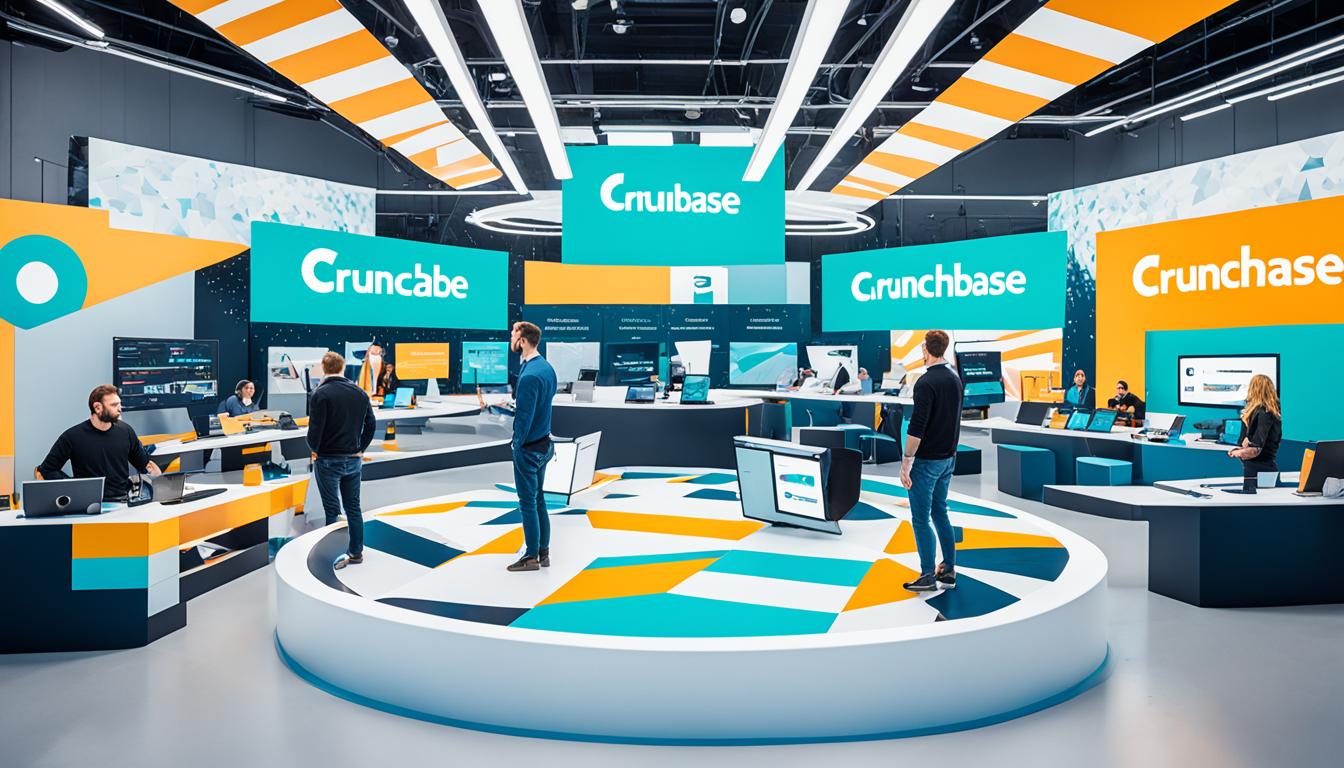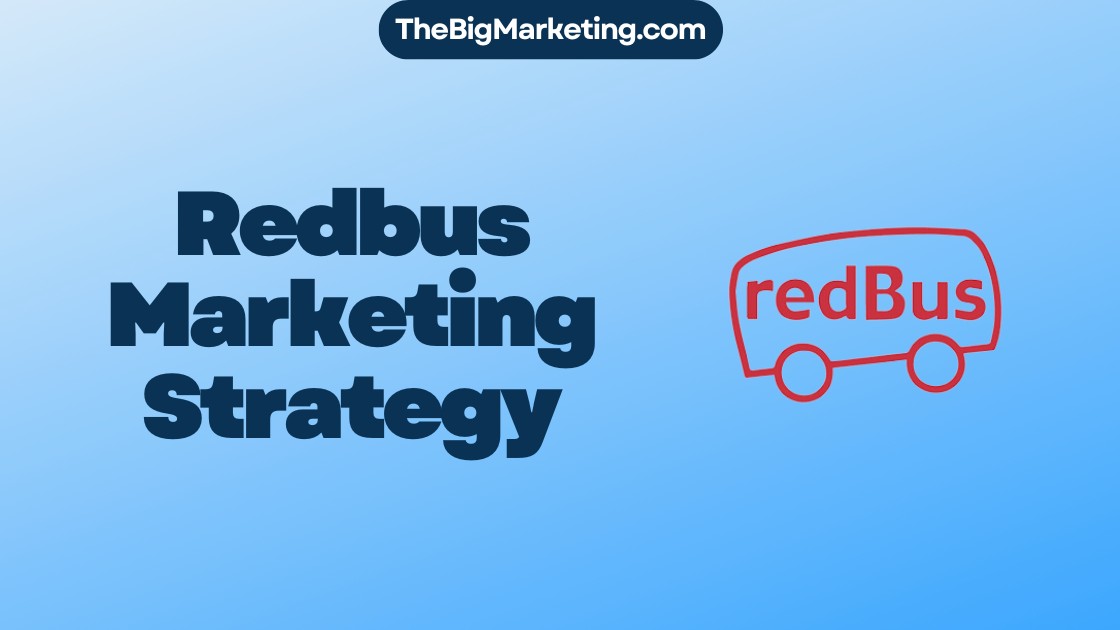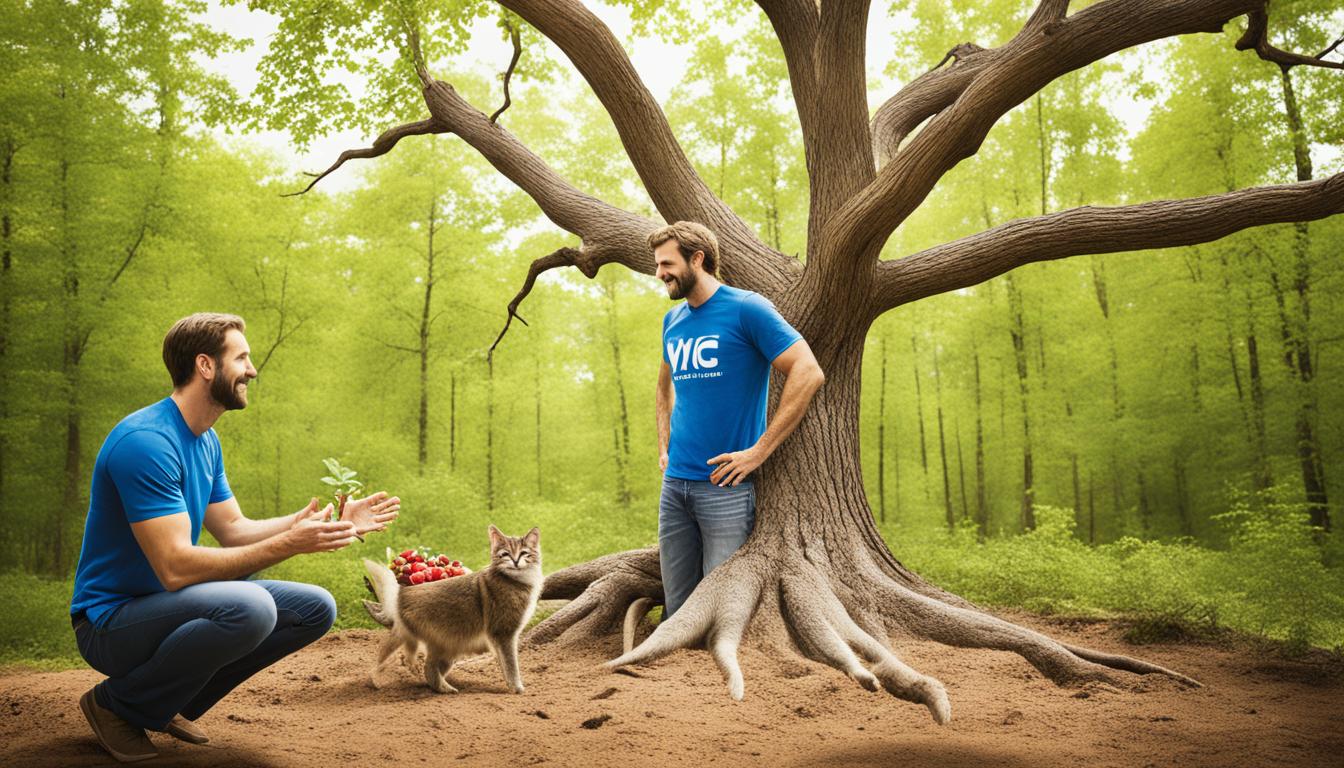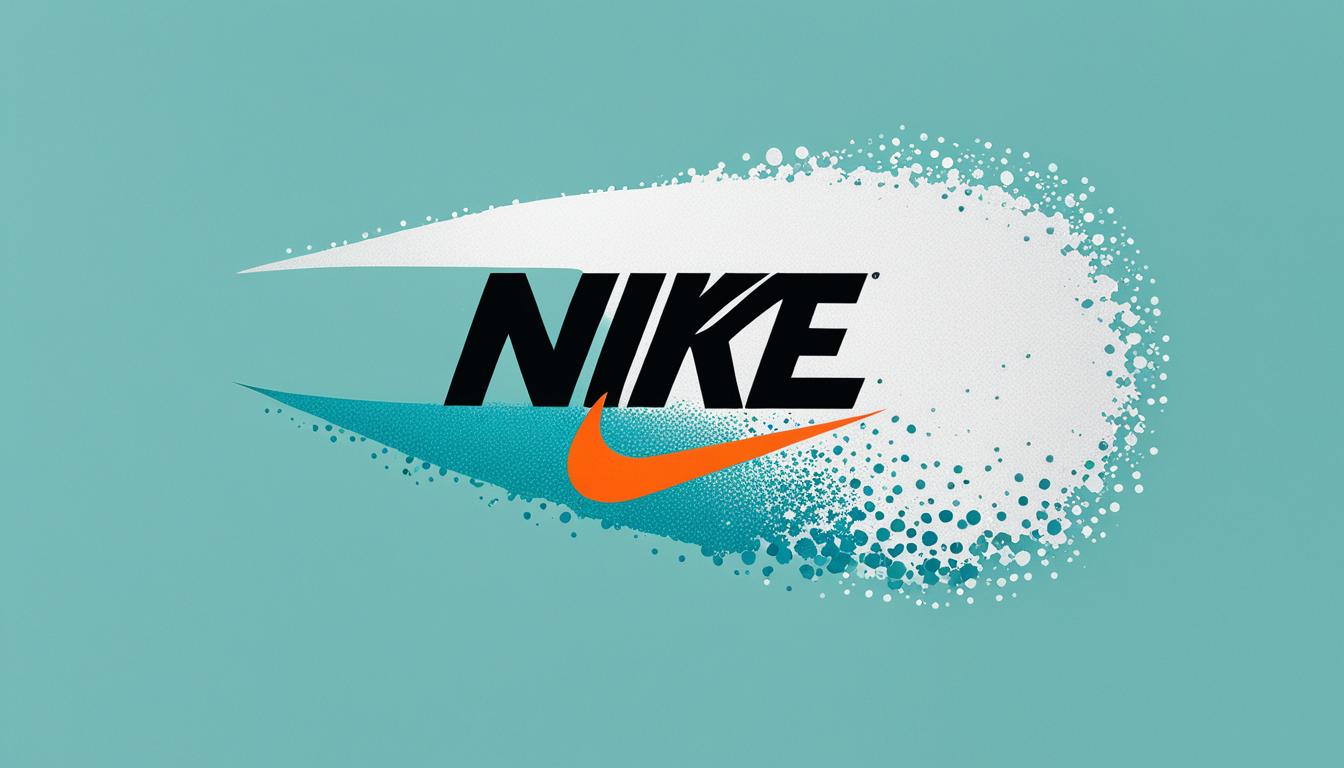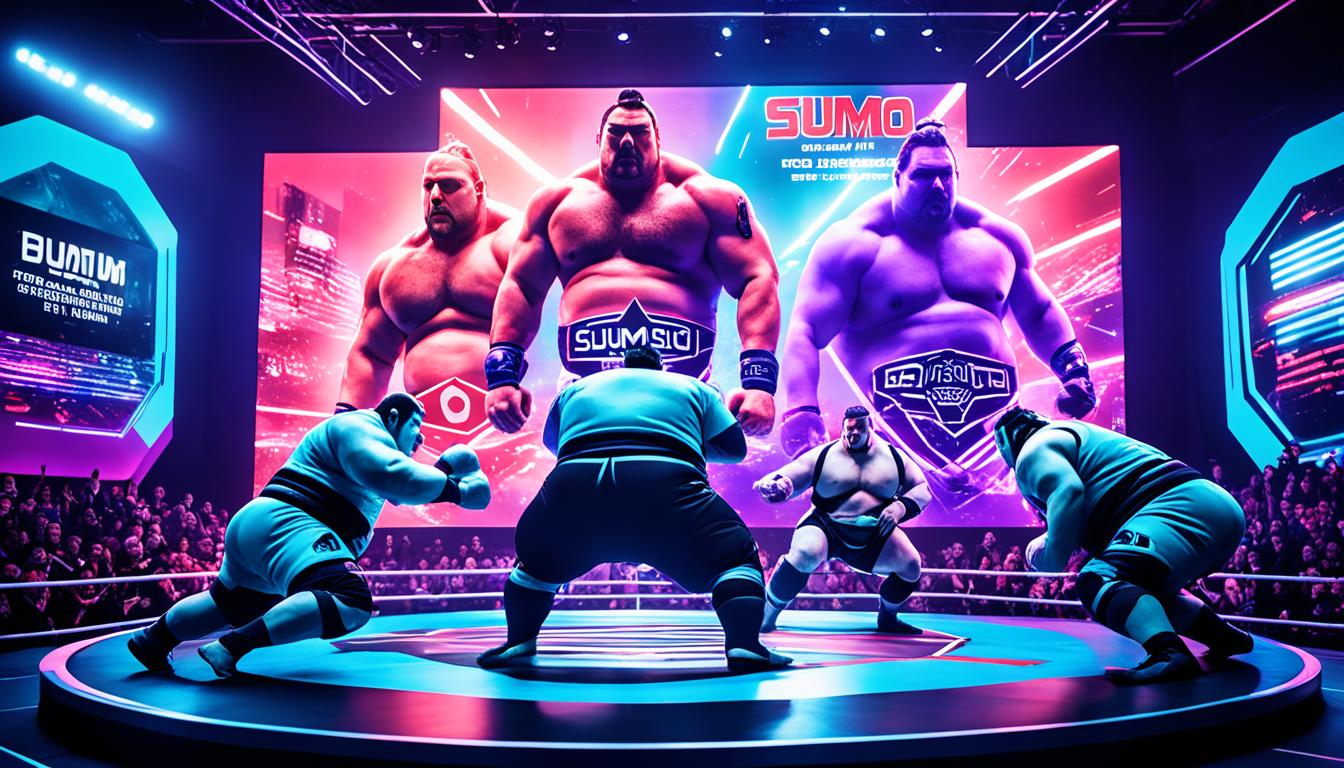Honda, the second-largest two-wheeler company in India, has established itself as a leader in the automotive industry. Since 1959, Honda has held the title of the largest manufacturer of motorcycles, thanks to its commitment to quality and innovation.
In the past, Honda primarily targeted the age group of 30-51. However, recognizing the evolving preferences of consumers, Honda has expanded its target market to include younger drivers and young families. This strategic shift has contributed to the immense growth of Honda’s sales in recent years.
One notable milestone in Honda’s marketing journey was the successful introduction of new and innovative products. In 1963, Honda’s sales increased by a remarkable 90,000 units, thanks to a well-executed marketing campaign.
To commemorate the 20th anniversary of the Honda Activa, Honda launched the campaign “Precious as a Gold,” which further solidified its brand presence. In 2023, Honda introduced a new brand campaign named ‘A Honda Goes Beyond,’ showcasing its dedication to exceeding customer expectations.
Notably, during the challenging times posed by the COVID-19 pandemic, Honda demonstrated resilience and determination. The company, known for its can-do spirit, remained focused on delivering for its consumers.
Honda recognizes the importance of digital presence and actively engages with its audience on popular social media platforms like Instagram, Facebook, and Twitter. Their extensive following is a testament to the brand’s strong connection with its customers.
In the global market, Honda faces competition from renowned brands such as Volkswagen, Toyota, Ford, and Yamaha. These competitors invest aggressively in marketing and research and development to gain a larger market share.
Honda’s digital marketing strategy places emphasis on building a wider network and delivering better services to meet consumer preferences. In 2018, Honda possessed a market share of 5.1%, which increased to 5.5% in 2019. Although it dipped slightly to 5.2% in 2020, Honda remains a formidable player in the automotive industry.
With the automotive industry boasting high competitive rivalry, Honda consistently vies against major players like Toyota, GM, and Ford. Buyers in this industry wield significant power due to the abundance of brands and models available.
While the threat of substitutes for Honda’s vehicles is moderate, factors such as the growth of public transportation systems and the rising popularity of ride-sharing services pose challenges. However, Honda remains steadfast in its commitment to leveraging global opportunities, particularly in emerging markets like China and India.
Looking forward, Honda sets ambitious goals for its electric vehicle (EV) business. By 2040, Honda aims to have EVs and fuel cell electric vehicles (FCEVs) represent 100% of its global vehicle sales. The company plans to reduce battery costs by over 20% in North America by 2030 and establish a competitive business structure aimed at reducing overall production costs by approximately 35%.
Honda aims to secure enough batteries to produce around 2 million EVs annually, with EVs and FCEVs accounting for 40% of its global auto sales by 2030. Additionally, the company targets a return on sales (ROS) of 5% for its EV business by 2030. To fund these ambitious plans, Honda plans to invest approximately 10 trillion yen in resources over a 10-year period through FY2031.
The Honda 0 Series, a global EV series, is set to launch seven models worldwide by 2030. Furthermore, Honda will introduce a micro-mobility product with four moped power packs (MPPs) in Japan before the end of FY2026. In 2026, Honda plans to unveil a model similar to the Saloon concept.
Key Takeaways:
- Honda is the 2nd largest two-wheeler company in India and the largest motorcycle manufacturer since 1959.
- Honda has expanded its target market to include younger drivers and young families.
- Honda’s sales have grown due to the introduction of new innovative products.
- Honda has a strong presence on social media platforms and actively engages with its audience.
- Honda faces competition from brands like Volkswagen, Toyota, Ford, and Yamaha.
Through strategic branding and continuous innovation, Honda has solidified its position as a prominent player in the global automotive industry. By adapting to changing consumer preferences and investing in electric vehicle technology, Honda is poised to lead the industry into a more sustainable future.
About Honda
Honda is a renowned Japanese multinational company that has established itself as a leader in the automotive and motorcycle industries. With a strong focus on innovation and advanced research, Honda has positioned itself as a trusted brand in the global market.
At the core of Honda’s success are its Fundamental Beliefs, which include “Respect for the Individual,” “Initiative,” “Equality,” and “Trust.” These beliefs drive Honda’s brand identity and shape its approach to business.
The company principle centers around maintaining a global viewpoint and supplying high-quality products at a reasonable price. This commitment to excellence has allowed Honda to earn the trust and loyalty of customers worldwide.
Honda’s management policies reflect ambition, youthfulness, sound theory, fresh ideas, effective time management, enjoyment of work, open communication, harmonious workflow, and the value of research and endeavor. These policies ensure that Honda stays at the forefront of industry trends and remains committed to continuous improvement.
As a testament to its commitment to knowledge sharing and engaging with its customers, Honda has published 140 articles on the Honda Engine Room content hub over the past year. These articles, which cover various product groups, effectively communicate Honda’s brand positioning and showcase the company’s expertise.
By leveraging its content marketing strategy, Honda has successfully engaged its audience with specific vehicles. For example, content related to the Honda E electric car generated dwell times exceeding four minutes, indicating a high level of engagement and interest in the brand.
Furthermore, Honda’s dedication to innovation is evident in its efforts to develop hybrid vehicles. After experiencing the Honda CR-V Hybrid, about 63% of participants regarded Honda as a leader in hybrid technology, highlighting the positive brand perception resulting from the product experience.
Post-event, approximately 50% of participants actively engaged with the Honda brand by visiting the company’s website, searching for ‘Honda CR-V’, or scheduling a visit with a dealer. This level of engagement demonstrates the effectiveness of Honda’s marketing strategies and the strong influence the brand has on potential customers.
With a focus on paid media as a PR channel, Honda strategically directs people engaging with paid content to the Honda Engine Room platform, showcasing its commitment to providing valuable and informative content to its target audience. Honda recognizes the importance of a blended approach that utilizes owned, earned, and paid channels to construct a robust and comprehensive marketing strategy, with a particular emphasis on the evolving landscape of organic social media.
With a rich history dating back to 1959, when Honda became the world’s largest motorcycle manufacturer, the company has continued to make significant contributions to the automotive and motorcycle industries. By the end of 2019, Honda had produced an impressive 400 million motorcycles.
Today, Honda stands as the world’s largest manufacturer of internal combustion engines, with an annual production of over 14 million engines. Additionally, Honda holds the second-largest market share for motorcycle unit sales among manufacturers, solidifying its position as a dominant force in the industry.
Honda’s success extends beyond motorcycles. As of 2015, Honda is the eighth largest automobile manufacturer globally, demonstrating its continued growth and influence in the automotive market.
Looking towards the future, Honda has set ambitious goals for its electric vehicle (EV) division. In 2022, the company announced plans to invest ¥5 trillion (US$40 billion) in EVs and batteries over the next decade. Honda aims to introduce 30 new EV models worldwide by 2030, showcasing its commitment to sustainable transportation and cutting-edge technology.
In pursuit of self-driving technology, Honda partnered with Cruise, a self-driving car company owned by General Motors, in 2021. Together, they are working to develop a self-driving car for ride-hailing services, further reinforcing Honda’s commitment to innovation and shaping the future of transportation.
With a global workforce of over 200,000 individuals, Honda prides itself on being an employer of choice. The company offers diverse opportunities for growth and development, attracting talented individuals from around the world.
Today, Honda vehicles are retailed in more than 150 countries, serving a vast and diverse customer base. Through its strong brand positioning and commitment to quality, Honda continues to set the standard for excellence in the automotive and motorcycle industries.
Honda’s Target Market
Honda, a renowned automobile manufacturer, strategically targets the middle-income group with its pricing strategy. By providing affordable and value-for-money products, Honda has successfully captured a significant market share. However, the company’s approach to the target market has evolved in recent years.
In addition to their focus on the middle-income group, Honda has recognized the importance of appealing to younger drivers and young families. These segments have become a key target market for the brand, resulting in increased sales and market penetration.
Honda’s marketing strategy for the Honda Civic, one of their popular models, encompasses comprehensive demographic, psychographic, and geographic segmentation variables. By considering factors such as age, lifestyle, income, and location, Honda can tailor its marketing efforts to effectively reach and connect with their target audience.
Furthermore, Honda places great emphasis on understanding consumer behavior. By gaining insights into consumer preferences, needs, and expectations, the company can develop products and marketing strategies that resonate with their target audience.
When it comes to product strategy, Honda offers a diverse range of vehicles. Their product lineup includes motorcycles, scooters, and big bikes, catering to various segments of the market. For motorcycles specifically, Honda targets different segments including top executives, young executives, teenagers, and females. This breadth of product offerings allows Honda to capture a wider customer base and appeal to different target audiences.
Honda’s Target Market Overview
| Target Audience | Main Focus |
|---|---|
| Middle-Income Group | Affordable and value-for-money options |
| Young Drivers and Young Families | Appealing to a new generation of customers |
| Various Segments (Motorcycles) | Top executives, young executives, teenagers, and females |
As part of their sales strategies, Honda utilizes market penetration pricing to make their products accessible to a wider range of customers. This approach enables Honda to expand their customer base and increase sales volumes.
Moreover, sustainability is a key focus for Honda across their operations. The company emphasizes environmental preservation, aiming to achieve a significant reduction in CO2 emissions, waste, and water intake. Honda’s commitment to sustainability aligns with the values of their target audience, strengthening their connection and brand loyalty.
In terms of promotion, Honda employs personal selling as a key component of their marketing strategy. This direct interaction with customers allows Honda to build relationships, address specific needs, and provide personalized recommendations, further enhancing their brand image.
In summary, Honda’s target market consists of the middle-income group, with a recent shift towards younger drivers and young families. Through their comprehensive marketing and sales strategies, Honda successfully caters to the needs and preferences of their target audience, solidifying their position in the competitive automotive market.
Honda’s Product Strategy
Honda, a renowned automotive manufacturer, is recognized for its diverse and innovative product portfolio that caters to various market segments. The company’s product strategy is rooted in its core principles of customer satisfaction, quality, and environmental sustainability.
Honda’s commitment to excellence is reflected in the meticulous engineering and craftsmanship of their vehicles. Through extensive market research and feedback gathering, Honda tailors its products to exceed customer expectations, meeting their specific needs and preferences.
One key aspect of Honda’s product strategy is its focus on fuel efficiency and environmental sustainability. The company has made significant efforts in developing fuel-efficient engines, investing in alternative energy sources, and implementing eco-friendly manufacturing processes. This dedication to sustainability aligns with their commitment to environmental conservation.
Moreover, Honda invests substantially in research and development, particularly in the areas of hybrid and electric vehicles, autonomous driving systems, and advanced safety features. By leveraging technological advancements and innovation, Honda ensures that its products are at the forefront of the automotive industry.
Honda’s product strategy is not limited to traditional vehicles. The company also offers a wide range of motorcycles, scooters, and big bikes, catering to different segments and markets. This diversification allows Honda to reach a broader customer base and strengthen its position in the industry.
Through its well-rounded product strategy, Honda has successfully shaped consumer preferences, establishing a strong emotional connection with its customers. The company’s emphasis on quality, innovation, and sustainability has set new standards in the automotive industry and contributed to its competitive advantage.
As Honda looks toward the future, it continues to push boundaries and embrace the electric vehicle (EV) revolution. By 2030, Honda aims to set up a global BEV production system that produces over 2 million units annually, with the goal of 100% of its global sales comprising EVs and FCVs by 2040.
Looking ahead, Honda has exciting plans for new EV models across different regions. In China, a mass-production model inspired by the “e:N SUV 序” concept is scheduled for release by the end of 2024. Additionally, a total of 10 EV models will be introduced in China by 2027.
In Japan, Honda will launch an N-VAN-based commercial-use mini-EV model in the first half of 2024. Two compact EVs, including an SUV model, are also slated for release in Japan in 2026.
In North America, Honda will unveil the “PROLOGUE” in 2024, followed by the launch of a mid- to large-sized EV using a new E&E architecture in 2025. Similarly, the European market will witness the sequential launch of the “e:Ny1” from the “e:N” series across multiple countries starting in the fall of 2023.
By constantly pushing the boundaries of innovation, Honda’s product strategy remains one of its key strengths, cementing its position as a leader in the automotive industry.
Honda’s Price and Place Strategy
Honda, one of the world’s leading automobile manufacturers, has strategically designed its pricing and distribution channels to cater to a wide range of customers while ensuring a robust global presence. Let’s delve into Honda’s pricing strategy and the various distribution channels the company utilizes to reach its target market.
Pricing Strategy: Balancing Affordability and Premium Options
Honda adopts a comprehensive pricing strategy that addresses the needs of different customer segments effectively. The company offers affordable products that appeal to the middle-income group, positioning itself as an accessible and reliable brand. Simultaneously, Honda provides premium options for sports bikes and luxury motorcycles, targeting customers who seek a higher level of sophistication and performance.
In terms of pricing methodologies, Honda employs various approaches to align with market dynamics and gain a competitive edge. These include:
- Value-based pricing: Honda determines its prices based on the perceived value that customers associate with their products. By considering the unique features, quality, and benefits, Honda sets its prices to reflect the value customers receive from their purchases.
- Market penetration pricing: Honda strategically sets lower prices to penetrate new markets and attract a larger customer base. This approach helps Honda build brand loyalty and capture a substantial market share.
- Product line pricing: Honda offers a diverse product mix that ranges from motorcycles and automobiles to power equipment, marine engines, aircraft, and more. By adopting product line pricing, Honda sets different price points for each product category to maximize profitability.
- Competitive pricing: Honda takes into account competitors’ pricing strategies, especially in regions like Europe, where pricing is set in accordance with rival brands such as Peugeot, Renault, Ford, and Opel. This approach ensures that Honda remains competitive in the market without compromising profitability.
- Geographical pricing: Honda considers regional factors such as inflation rates, government duties, and currency fluctuations when setting prices in different markets worldwide. This strategy helps Honda adapt to local economic conditions and maintain a balanced pricing structure.
- Psychological pricing: Honda utilizes pricing techniques that leverage customers’ psychological perceptions of value. By setting prices that end in .99 or .95, Honda creates the illusion of a lower cost and attracts price-sensitive customers.
- Cost-plus pricing for after-sales services: Honda incorporates a cost-plus pricing approach for its after-sales services. This ensures that the prices for maintenance, repairs, and spare parts cover the costs incurred by the company while ensuring customer satisfaction.
- Dynamic pricing for new technologies: With the rise of new technologies and innovations in the automotive industry, Honda embraces dynamic pricing. This strategy allows Honda to adjust prices according to the changing market demand for advanced features and technologies.
Overall, Honda’s pricing strategy combines affordability and premium options while considering market dynamics, regional conditions, and competitive influences.
Place Strategy: A Robust Distribution Network
Honda’s place strategy is centered around a strong distribution network that ensures widespread availability of their products. The company has successfully established a global manufacturing presence, with production facilities strategically located to meet regional demand efficiently.
Honda’s distribution channels include:
- Extensive dealer network: Honda maintains a vast network of authorized dealerships worldwide. This expansive network enables customers to easily access Honda’s products and receive quality service through well-trained professionals.
- Online sales platforms: In addition to traditional brick-and-mortar dealerships, Honda has embraced the digital era by offering online sales platforms. This allows customers to explore and purchase Honda products conveniently from the comfort of their homes.
- After-sales services: Honda emphasizes the importance of after-sales services in maintaining customer satisfaction and loyalty. The company provides comprehensive after-sales support, including maintenance, repairs, and genuine spare parts, ensuring that customers have a reliable and hassle-free ownership experience.
- Strategic partnerships and collaborations: Honda collaborates with strategic partners to extend its reach and tap into new markets. These partnerships enable Honda to leverage established distribution channels and benefit from local market expertise.
Global Manufacturing Presence: Catering to Diverse Markets
With a strong focus on global manufacturing, Honda positions itself as a reliable automotive manufacturer worldwide. By establishing production facilities in different regions, Honda can cater to diverse market preferences efficiently.
Additionally, Honda’s global manufacturing presence allows the company to adapt to regional regulations, optimize production processes, and reduce transportation costs. This, in turn, enables Honda to offer competitive prices to customers across various markets.
The combination of Honda’s extensive dealer network, online sales platforms, after-sales services, and strategic partnerships ensures that the company’s products are readily available to customers worldwide. This robust distribution network is a key component of Honda’s place strategy.
By implementing a well-defined pricing strategy and maintaining a strong distribution network, Honda continues to thrive as a leading player in the automotive industry. The alignment of these strategies with market conditions and customer preferences enables Honda to provide value-driven offerings that cater to a diverse range of customers.
Honda’s Promotional Strategy
Honda, known for its innovative approach and commitment to sustainability, has implemented various promotional strategies to communicate its brand values and engage with customers effectively. Through a combination of advertising campaigns and social media marketing, Honda has been successful in creating a strong and memorable brand presence.
Advertising Campaigns: Showcasing Honda’s Promise
Honda has launched several impactful advertising campaigns over the years, capturing the essence of the brand and connecting with consumers on an emotional level. One notable campaign is the “Origin of Determination,” which features over 100 of Honda’s pioneering products in a captivating 60-second TV commercial. This campaign demonstrates Honda’s commitment to innovation and showcases the diverse range of products, including motorcycles, cars, SUVs, light trucks, marine engines, and aircraft. By highlighting this breadth of offerings, Honda positions itself as a brand that transcends multiple industries and speaks to both its legacy of innovation and its wide product line.
Another prominent campaign with enduring popularity is “The Power of Dreams,” which has been a part of Honda’s branding for years. This slogan embodies the company’s belief in the power of human dreams and aspirations, resonating with consumers and reinforcing Honda’s commitment to pushing boundaries and making dreams a reality.
Social Media Marketing: Engaging with a Wider Audience
Honda recognizes the importance of an active digital presence and has leveraged social media platforms as a key component of its promotional strategy. Through its social media channels, Honda engages with a wide audience, sharing updates on new products, technology advancements, sustainability initiatives, and more.
Honda’s social media marketing activities aim to strengthen brand loyalty and foster ongoing relationships with customers. By consistently creating engaging content that aligns with its brand values, Honda attracts consumers and encourages them to learn more about the company and its offerings on the official Honda website.
Aligning Promotions with Sustainability and Innovation
Honda’s promotional strategy aligns closely with its commitment to sustainability and innovation. The company’s pioneering technologies, such as the CVCC engine and hybrid systems, have played a significant role in reducing emissions and improving fuel efficiency. By showcasing these advancements in its advertising campaigns and social media marketing, Honda emphasizes its dedication to creating a more sustainable future.
In addition, Honda’s focus on innovation is evident in its plans to launch 30 new electric vehicle (EV) models globally by 2030. This forward-thinking approach sets Honda apart from competitors and positions the brand as a key player in the evolving automotive industry.
Summary
Honda’s promotional strategy leverages advertising campaigns and social media marketing to effectively communicate its brand values, engage with customers, and highlight its commitment to sustainability and innovation. Through memorable campaigns and a strong digital presence, Honda continues to attract consumers and reinforce its position as a leading global automotive brand.
Honda’s Digital Presence
Honda recognizes the importance of a strong online presence in today’s digital age. The company actively maintains profiles on popular social media platforms, including Facebook, Instagram, and Twitter, to connect with a wider audience and engage with customers. By leveraging these platforms, Honda effectively showcases its brand, products, and values to generate interest and foster a sense of community.
On Instagram, Honda employs visually appealing posts that resonate with younger demographics, effectively increasing its reach and engagement. Whether it’s showcasing sleek motorcycle designs or capturing the excitement of a scooter ride, Honda’s Instagram content consistently captivates its audience.
When it comes to Facebook, Honda taps into the power of customer stories, testimonials, and promotions to create an inclusive community and foster brand loyalty. By sharing authentic experiences and highlighting the value of its products, Honda builds meaningful connections with its customers.
As for Twitter, Honda utilizes this platform for real-time updates, industry news, and engaging with customers through witty and relatable tweets. By maintaining an active presence on Twitter, Honda stays connected to its audience, addressing their concerns, and showcasing its commitment to customer satisfaction.
Honda’s Social Media Profiles
Honda’s social media presence extends beyond the three mentioned platforms, with a robust network of profiles across various channels. The company strategically leverages these social media platforms to connect, engage, and build relationships with its customers and fans.
| Social Media Platform | Description |
|---|---|
| Featuring customer stories, testimonials, and promotions to foster a sense of community and loyalty. | |
| Visually appealing posts to engage younger demographics and increase reach. | |
| Real-time updates, industry news, and customer engagement through witty and relatable tweets. |
These social media profiles reflect Honda’s commitment to engaging with diverse audiences and staying at the forefront of digital marketing trends. By using a comprehensive marketing mix that emphasizes digital platforms, Honda ensures that its brand and products remain relevant and accessible.
Through its digital presence, Honda creates a dynamic online ecosystem that connects with customers, amplifies its brand message, and fosters a sense of loyalty among its fanbase. By consistently delivering engaging content and meaningful interactions, Honda brings its products and brand values to life in the digital space.
Competitor Analysis
Honda operates in a highly competitive market, competing with major automakers like Toyota, Volkswagen, General Motors, and Ford. These companies, along with others in the industry, pose a challenge to Honda in terms of market share and customer acquisition. To maintain its position and attract new customers, Honda invests heavily in marketing and research and development.
One of Honda’s strengths is its diversified product segments, which include automobiles, motorcycles, power products, financial services, aviation, robotics, and artificial intelligence. This diversification allows Honda to explore multiple revenue streams and cater to different customer needs.
When it comes to the automotive market, Honda faces tough competition from its key rivals, including Toyota, Volkswagen, General Motors, and Ford. These companies have a strong presence globally and are constantly innovating to capture market share.
However, despite intense competition, Honda has managed to maintain a significant market share in various segments. For example, Honda’s motorcycle business generates 12.3% of its total sales and captured 22.1% of the world’s motorcycle market in the first half of 2016. Moreover, Honda’s Financial Services division contributes to 12.6% of the company’s revenue.
Honda relies heavily on North America, which accounts for 55.6% of its total revenue. This region is a battleground for major automakers, and Honda faces fierce competition in capturing and retaining customers.
Honda’s Competitors and Market Share
| Competitor | Market Share |
|---|---|
| Toyota | XX% |
| Volkswagen | XX% |
| General Motors | XX% |
| Ford | XX% |
The above table illustrates some of Honda’s main competitors in the automotive industry and their respective market shares. Although Honda’s market share may vary within different regions and segments, it remains an influential player in the market.
To maintain its competitiveness, Honda invests significantly in research and development. For instance, in 2015, Honda spent US$5.4 billion, equivalent to 4.5% of its total revenue, on R&D. This investment enables Honda to innovate and introduce new products and technologies that can attract customers and give them a competitive edge.
In summary, Honda faces stiff competition from major automakers such as Toyota, Volkswagen, General Motors, and Ford. However, through its diverse product segments, strong market presence, and strategic investments, Honda continues to compete in the global automotive market and maintain its market share.
Challenges and Triumphs
Honda has faced various challenges throughout its journey, but it has always managed to overcome them through its innovative approach and strategic brilliance. These challenges have truly shaped Honda’s success story and highlighted its ability to turn adversity into triumph.
Resilience and Continuous Improvement
One of Honda’s key strengths is its continuous commitment to innovation and improvement. From its early days of attaching a motor to a bicycle to becoming a global phenomenon, Honda has consistently pushed the boundaries of what is possible in the industry. Even in the face of initial failures and setbacks, such as racing against European giants, Honda has demonstrated remarkable resilience and the ability to learn from these experiences to pave the way for its future success.
Honda’s ability to challenge the status quo and enter motorcycle races as a force to be reckoned with showcases its boldness and determination. These moves have not only helped Honda establish itself as a prominent player in the market but have also transformed its brand image. Honda’s success in international racing has been instrumental in highlighting its excellence and expertise in motorcycle engineering, elevating the entire business on a global scale.
Global Ambition and Thinking Beyond Local Markets
Honda’s global ambition and presence have been crucial to its success. By thinking beyond local markets and venturing into uncharted territories, Honda has managed to establish itself as a true industry leader. Its global reach and presence underscore the importance of expanding horizons and seeking opportunities outside of traditional boundaries.
Furthermore, Honda’s continuous investment in Research and Development (R&D) has played a significant role in overcoming technological challenges. By consistently innovating and improving its products, Honda has emerged as a pioneer in motorcycle engineering, setting new benchmarks for the industry.
Sustainability and Resourcefulness
Honda’s story also highlights the importance of sustainability and resourcefulness in the industry. Facing post-war resource constraints, Honda’s creative use of surplus materials exemplifies how creativity and persistence can overcome adversity. These resourceful practices have not only helped Honda navigate challenging times but have also reinforced its commitment to environmental sustainability.
Visionary Leadership
A visionary leadership approach has been instrumental in Honda’s journey. From the beginning, Honda’s leaders have demonstrated the ability to see potential where others see obstacles. Their boldness and foresight have paved the way for Honda’s success and allowed the company to venture into new territories. Honda’s leadership has consistently pushed the boundaries of innovation, and their visionary mindset continues to drive the company forward.
Overall, Honda’s challenges have acted as stepping stones to its triumphs. Through resilience, innovation, global ambition, and visionary leadership, Honda has become a true success story in the industry.
Conclusion
Honda’s success in the global automotive industry can be attributed to its effective branding strategy and focus on key success factors. With a market share of approximately 10.2 percent in the United States and being ranked as the 5th largest automobile manufacturer globally, Honda has established itself as a market leader.
One of Honda’s key strengths lies in its reputation for innovation, as showcased by its recognition as the world’s largest engine manufacturer and a market leader in motorcycles. Additionally, Honda has received the title of “Greenest Automaker” five times for its commitment to low smog and greenhouse gas emissions. This focus on environmentally friendly practices has helped enhance their brand image and attract eco-conscious consumers.
Furthermore, Honda’s strategic missions and targets, encompassing research and development, production efficiency enhancement, product line expansion, and safer and greener technologies, have contributed to its success. The company’s mission statement, which emphasizes customer satisfaction and delivering high-quality products at reasonable prices, has helped it maintain a loyal customer base and expand its market reach globally.
As the automotive industry undergoes a transformation characterized by rapid changes, Honda remains committed to exploring unique mobility possibilities and taking on new challenges. With its redefined global brand slogan, “The Power of Dreams,” Honda aims to enable people to transcend constraints and augment their abilities and possibilities. Through a hybrid strategy of differentiation and low costs, Honda continues to strive for competitive advantage and drive growth in the industry.
